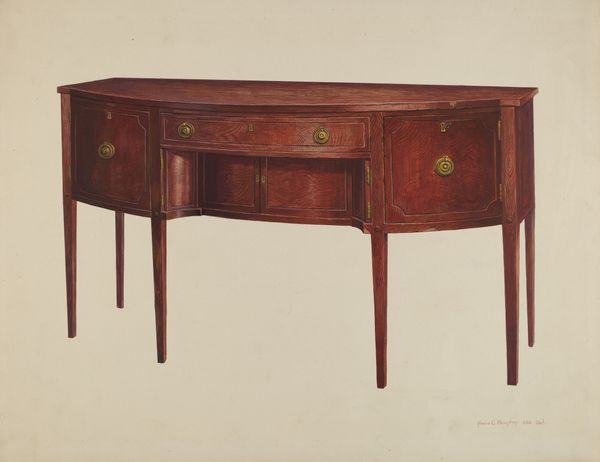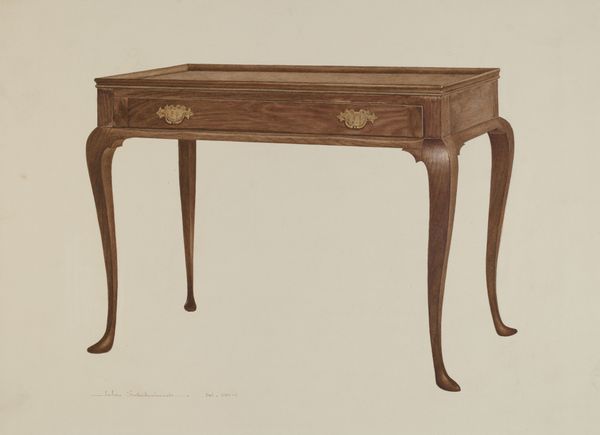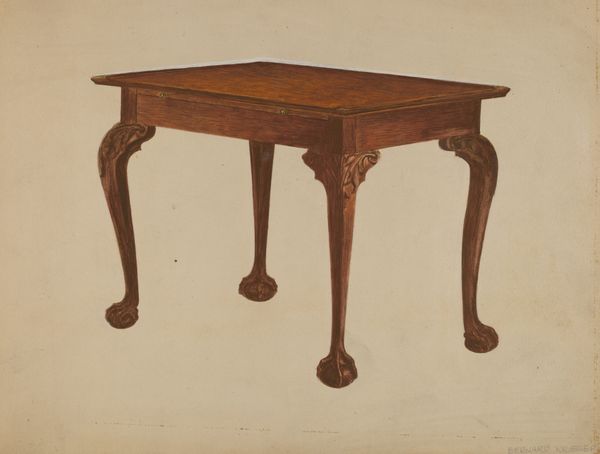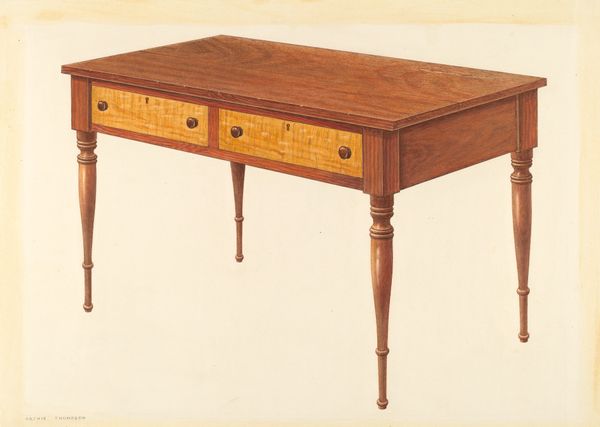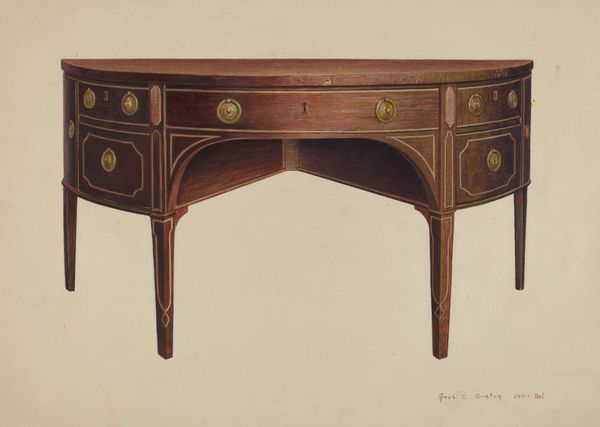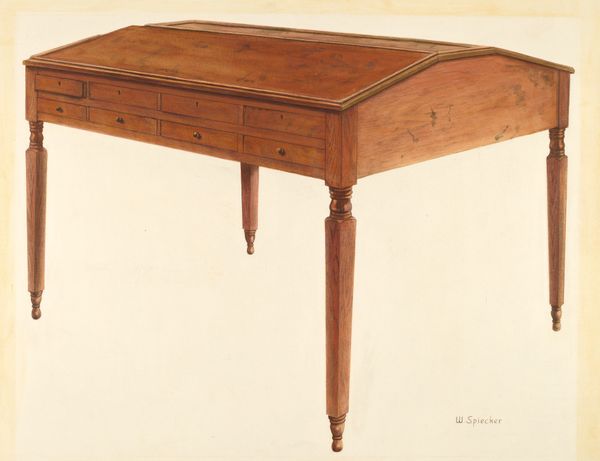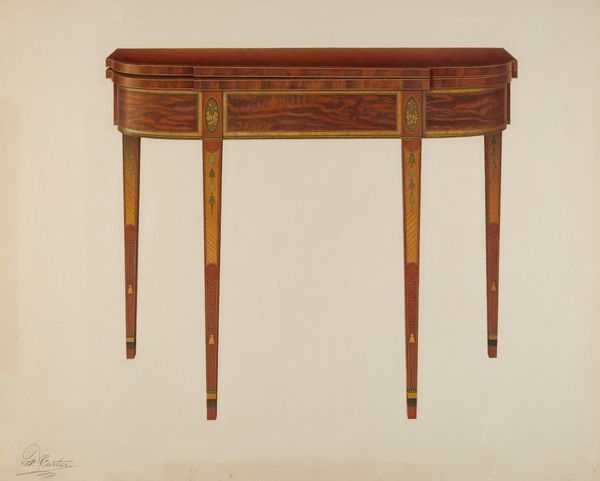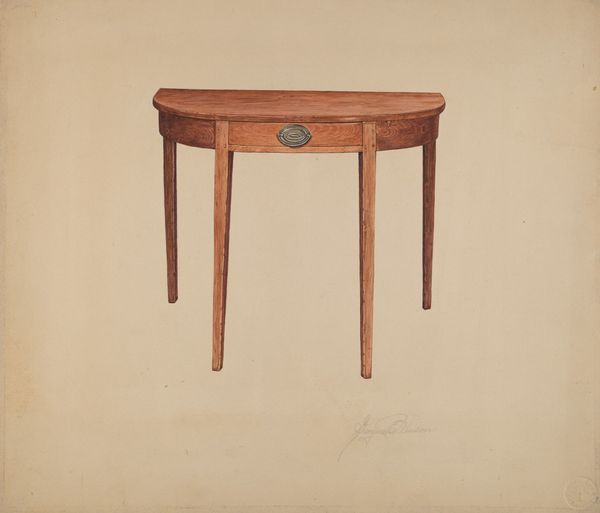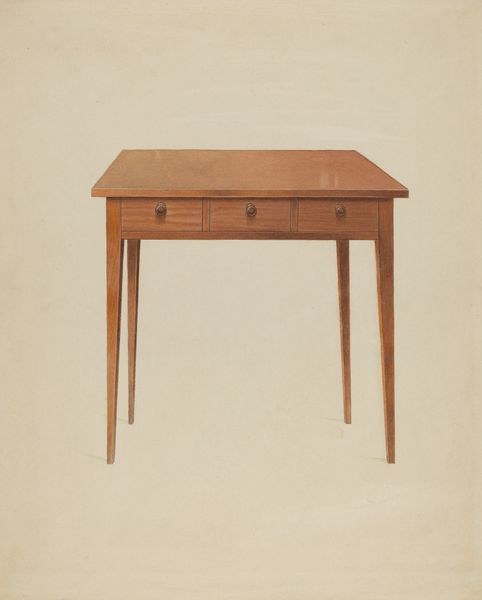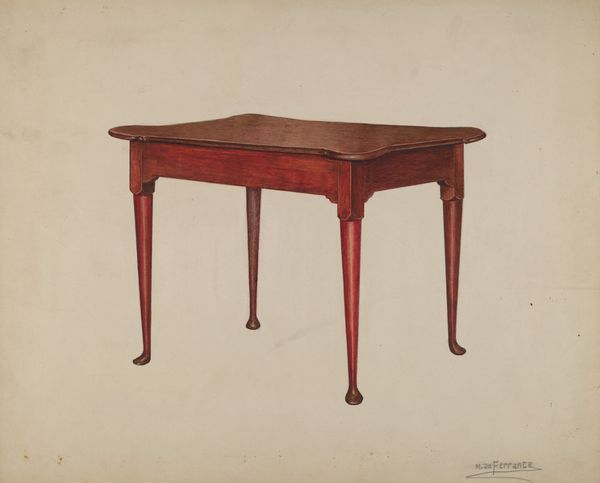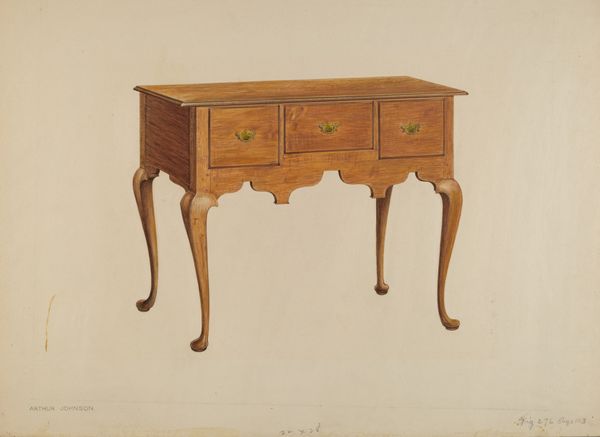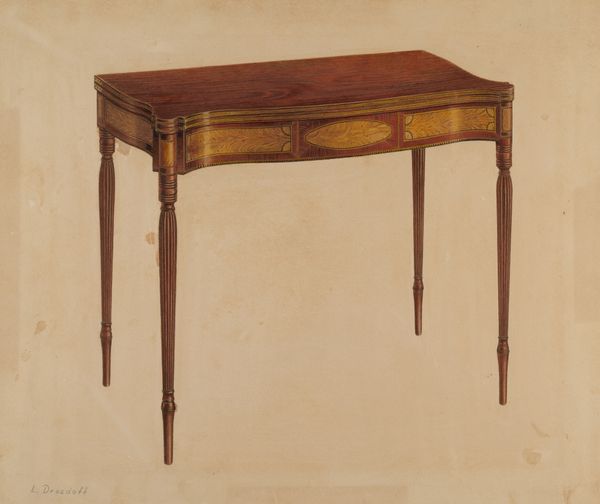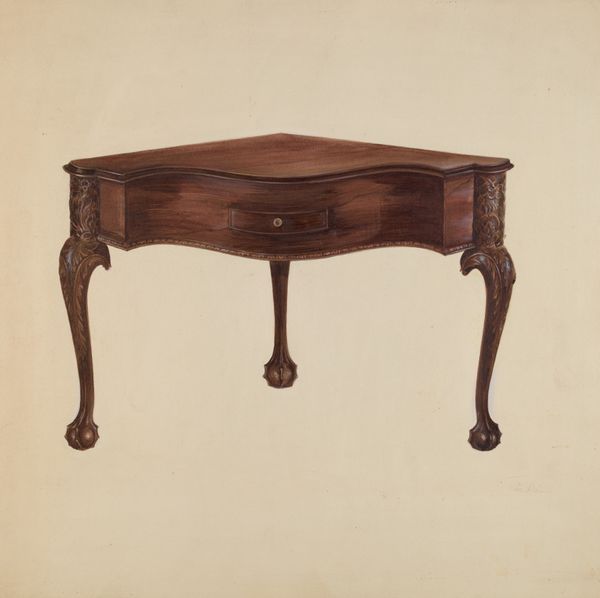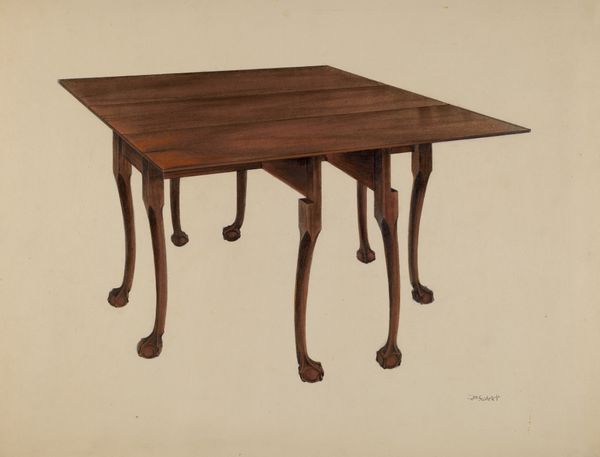
drawing, pencil
#
portrait
#
drawing
#
oil painting
#
pencil
#
academic-art
#
watercolor
Dimensions: overall: 35.5 x 45.6 cm (14 x 17 15/16 in.) Original IAD Object: 28 5/8"high. See data sheet for details.
Copyright: National Gallery of Art: CC0 1.0
Curator: Here we have a rendering of a Hepplewhite Drop Leaf Table, made around 1942. The artist, Hugh Ryan, captured this piece with a keen eye, likely employing either watercolor or pencil – perhaps even a mix. Editor: Immediately, I sense a certain elegance, a poised formality in its presentation. The color is rich, hinting at tradition and legacy, but those stark edges speak to modern simplicity, right? Curator: Absolutely. The Hepplewhite style itself, though rooted in 18th-century English design, gained renewed popularity in the early to mid-20th century here in America. Look how Ryan renders the slender, tapered legs and the gently curved drop leaves – these features speak volumes. There was a movement back to classic design amidst industrial design boom of the era. Editor: Indeed, notice the contrasting visual symbols – the table's solidity against the almost ethereal rendering. The way the wood grain is depicted and the details on the legs. It presents as a beacon of domestic stability during what would be the Second World War, an emblem of gentility that people yearned for and needed. Curator: Good eye. There is a definite focus on idealized domestic space through art. I find it so important to view images like these not as objective records, but instead as representations, laden with meanings constructed within very specific historical circumstances. Ryan's image then takes on a layered quality – reflecting social ideals, consumer aspirations, and wartime anxieties of the time. Editor: Precisely, so that visual symbol of domestic tranquility offers an appealing contrast against the turbulent backdrop of that era's socio-political conditions. The warm wood tones provide a psychological sanctuary, and one where we have an almost archetypal image of 'home'. Curator: Ryan created an image, not merely of a table, but of something more. We see this not only in this rendering, but in many pieces rendered by different hands and voices. Editor: An heirloom visualized – something to hand down through generations – that promises future, hope and continuation. Well, that’s certainly given me a new lens to view these artifacts through. Curator: Indeed. Viewing beyond object depiction enables you to discover history, legacy and more.
Comments
No comments
Be the first to comment and join the conversation on the ultimate creative platform.
